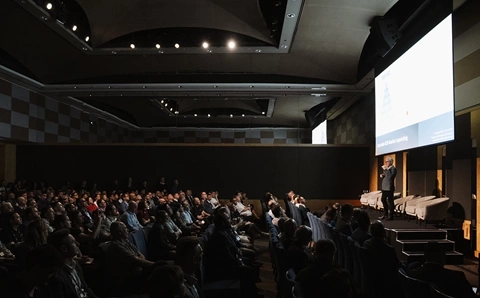Liquid cooling may become the standard for data centres as the compute demands of artificial intelligence make air cooling less viable, according to the chief executive of Motivair.
Schneider Electric acquired a 75% stake in Motivair, a provider of advanced liquid cooling solutions, one year ago and recently announced a joint portfolio of data centre cooling solutions designed to meet the demands of AI, with the cooling capacity of up to 2.5 megawatts of processing power.
Richard Whitmore, the CEO of Motivair, claimed that as more data centres reach those levels of power consumption, liquid cooling becomes a “requirement”.
“It doesn't mean that you can't cool some of these systems with air if you wanted to, but it's just not fiscally reasonable to literally have gale force winds coming through server racks … it's not practical anymore,” he said.
With cooling being so vital to data centres, the change from air to liquid cooling will mean completely different ways of thinking about data centre development and design, Whitmore explained.
“Over the last maybe 10 or 15 years, traditionally, when we're building data centres we’re building a large space and provisioning it to handle a wide range of different types of servers from different manufacturers," he said.
"If you had a higher density system, you could maybe do an APC containment system where you could thread the air temperature down a little bit, or you can do perforation tiles.
“Those little tricks of the trade, they don't happen in the data centres of the future. The data centres to accommodate AI systems are going to be purpose built with the silicon in mind, and that's just a different way of thinking about things.”
Whitmore claimed that the shift toward liquid cooling will also drive changes in the hardware as server vendors design their products to meet the demands of liquid cooling systems.
Traditionally, Dell or HPE similar would meet limited requirements around air temperature and clean power.
“After that, they're done. The boxes are shipped to the customers and the responsibility of if the server is working or not is flipped over to the consulting or engineering, and the data centre owner or operator to make sure that it's gonna work,” Whitmore claimed.
With liquid cooling, the demands are so specific that vendors are beginning to integrate parts of the systems into their products.
The systems are also far more complex, Whitmore explained, illustrating his point by describing the cold plates that sit on top of chipsets and contain water channels thinner than a human hair.
This means the systems are also potentially temperamental if they are not properly designed, produced and deployed.
“If there's any contamination in that loop, if dust, pollen or anything starts to plug those cold plates, the customer knows about it instantly, not in an hour or two," he said.
"The computer will tell the operator whether it can operate at optimal performance instantly, and if it doesn't, it the performance will actually drop."
On top of this, data centres are expected to be constructed and operational more quickly than ever, Whitmore added.
“The ROI on these AI systems, large language models, is one year … so that's what's also driving speed, but if you've got a billion dollars of compute coming in, you're expecting it to work perfectly,” he said.
Combined, these factors mean more risk in both the deployment and operation of data centres – risk that is compounded by a shortage of labour available for installation of the servers, the racks, and the complex cooling systems.
Whitmore said that without proper knowledge and expertise, trying to build a liquid cooled hyperscale datacentre only adds to that risk.
“Trying to do these things on the fly and figuring it out is a recipe for disaster, and I have seen it happen firsthand,” he said.
There are also efforts toward prefabrication, Whitmore said, which will mean less specialist knowledge needed at the point of installation and a faster time to operation.
“Prefabricated cooling infrastructure allows clients to scale quickly," he said.
"You're going to see more and more of that, because it's predictable and you can do it on a cadence.”








.jpg&h=142&w=230&c=1&s=1)




.jpg&w=100&c=1&s=0)










